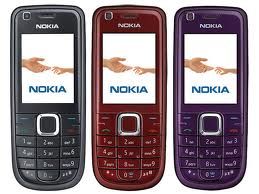

Nokia continues its low-end push with a new handset for developing markets, plus a number of new developer tools.
On 1 November, the troubled handset giant introduced the Nokia 109 for developing markets – before subsidies or taxes the 109 will cost around $42 (£26) – and announced two new programs for developers designing for a range of devices.
The clamshell-style 109 features a 1.8-inch thin-film-transistor (TFT) display and runs Nokia’s Series 40 user interface, which is simple (and rather pretty) but won’t keep users off the Internet. The phone runs Nokia’s Xpress browser, which Nokia describes as “cloud-accelerated” to reduce the data consumption of Web pages by up to 90 percent. In addition to offering a better browsing experience, the crunching of data in the cloud, instead of on the phone, helps to keep data costs low.
There’s an FM radio and a built-in speaker that’s powerful enough to be heard throughout a room, and an SD card slot that can support up to 32GB of data. The battery, impressively, can last for 7.5 hours of talk time but 33 days of standby time.
The Nokia 109 will be available this quarter in the Asia-Pacific region, China and Europe in choices of cyan and black.
But, of course, Nokia hopes to court the full range of users, and its software development kit (SDK) for developers enables them to design for Windows Phone Series 40, Symbian and even Android and iOS.
For its developers, on 30 October Nokia introduced the Nokia Ad Exchange (NAX) and a Nokia Premium Developer Program (NPDP).
NAX is a new, free way for developers to monetize their apps with in-app advertising and offers developers access to 120 advertising networks around the world.
“The analytics provided through NAX is really, really powerful for developers. They can actually drill down to understand in which countries consumers are using their apps, what time of day they engage in the most usage,” Kenny Mathers, director programs and monetization at Nokia, said in a video on the Nokia site.
With NAX delivering ads in more than 200 countries, Mathers said, “this is a tool that enables developers to run their own campaigns to drive awareness for their own applications within the exchange.”
The Premium Developer Program runs $99 (£61) for an annual membership and is for those who would like some help creating high-end apps, says Nokia.
The $99 fee gets a developer a one-year membership to the Microsoft Windows Phone Dev Center, which is essential for submitting apps to the Windows Phone Store; a licence to Telerik Rad Controls for Windows Phone, which are said to shorten an app’s time to market and help an ad to rank higher in the Store; two Nokia tech-support tickets for reporting issues or asking questions; and “1 million API [application programming interface] calls per calendar month with Buddy’s cloud API offering,” which offers a cloud back end for Windows Phone Apps with APIs that deliver common app scenarios as a service.
“There’s no better deal for a consumer than having an application that’s free, where a developer is still able to make money through advertising,” said Mathers. “It’s a really great solution.”
On 29 October, Microsoft officially unveiled its Windows Phone 8 operating system.
How much do you know about smartphones? Take our quiz!
Originally published on eWeek.
New chapter for famous name from Internet's early days, Napster, has been acquired and will…
Solving not-spots? Ofcom proposal to make UK the first European country to allow ordinary smartphones…
Pioneering robotaxi service from Alphabet's Waymo to go live in Washington DC next year, as…
Dozens of Chinese firms added to US export blacklist, in order to hamper Beijing's AI…
Chinese rival BYD overtakes global revenues of Elon Musk's Tesla, as record number of Tesla…
Messaging app Signal in the headlines after a journalist was invited to a top secret…